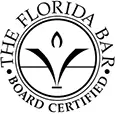What Does a Traumatic Brain Injury Diagnosis Do for My Legal Claim
A traumatic brain injury can significantly impact your legal claim and result in a higher settlement or award. Traumatic brain injuries are often life-changing and can result in permanent impairment and disability. As such, any compensation from the insurance company should cover all your medical care and expenses – both now and in the future.
Unfortunately, insurance companies know that traumatic brain injuries can significantly increase settlements and awards. That is why they fight these claims aggressively and try to pressure injured accident victims into signing quickly before they realize the full extent of their injuries.
Never sign a traumatic brain injury settlement without speaking to an experienced TBI lawyer.
A traumatic brain injury can result in significant physical, emotional, and financial harm. This will directly impact your legal claim. To recover compensation, you must prove that someone else’s negligence or wrongdoing caused your injury.
To build a strong case, you will want to hire an attorney to gather evidence such as medical records, witness statements, and expert testimony to demonstrate the extent of your injury and its impact on your life. The nature and severity of your brain injury will play a significant role in determining the value of your claim and any future medical expenses, lost wages, and other costs associated with your recovery.
Because of the complex nature of brain injury cases, you should hire an experienced personal injury attorney to help you navigate the legal process and fight for the compensation you deserve.
Should I Accept a Traumatic Brain Injury Settlement?
The decision to accept a traumatic brain injury settlement is a personal one that ultimately depends on your specific circumstances. You should consider factors such as:
- Amount offered
- Extent of your injury
- Future medical expenses
- Permanent impairment
- Lost wages
- Loss of future earnings
- Pain and suffering
- Likelihood of winning a larger settlement in court
Before making a decision, it’s highly recommended that you consult an experienced traumatic brain injury lawyer who can help you evaluate your options and make an informed decision.
What Is a Traumatic Brain Injury?
Traumatic brain injury is a concept many of us have become increasingly aware of recently as it has become news in amateur and professional sports and among victims of accidents. Professional football, soccer players, and boxers have developed chronic traumatic encephalopathy (CTE) due to repeated concussions during competition.
A traumatic brain injury occurs when a sudden trauma damages the brain. The damage can result when the head suddenly hits an object or hits an object that may pierce the skull and enter the brain tissue. Traumatic brain injury can also result from violent shaking or other movements of the head, like that which may cause whiplash. The kind of traumatic brain injury familiar to most people is a concussion, which accounts for most traumatic brain injury cases yearly.
Degrees of Traumatic Brain Injury
Initial symptoms of traumatic brain injury can be classified as mild, moderate, or severe, depending on how the effects of the injury present right away. Symptoms of a mild traumatic brain injury may include unconsciousness for a few seconds or minutes. Victims may have headaches, confusion, lightheadedness, dizziness, blurred vision, tinnitus, fatigue, sleep changes, and behavioral changes.
A person with a moderate or severe traumatic brain injury will experience these same symptoms but may also have a persisting or increasing headache, nausea or vomiting, seizures, sleep problems, abnormal pupil dilations, slurred speech, loss of coordination or balance, numbness, and increased or increasing confusion and agitation.
Always remember that just because a doctor states your injury is “mild” does not mean it is not a serious injury. Even so-called mild TBIs can have lasting complications and symptoms.
Emergency Status
Traumatic brain injuries can be—and usually are – emergencies. In the case of more severe injuries, the seriousness of the damage can worsen rapidly if no treatment is provided. Therefore, every degree of brain injury needs an assessment quickly.
Questions to Consider in TBI Diagnosis
In assessing the extent of the injury in a potential traumatic brain injury case, there are questions that the medical staff should be asking:
- How did the injury occur?
- Did the victim lose consciousness?
- How long was any period of unconsciousness?
- Are there any other changes in speech, coordination, awareness, or other signs of injury?
- Where on the head did the injury occur?
- What are the details about how the injury occurred—a fall, a blow, a vehicle accident?
- Were there sudden jarring or jolting movements of the body?
Symptoms of Traumatic Brain Injury
After a head injury, a victim can experience any of several common symptoms, which include:
- Spinal fluid (a thin, clear liquid) running from the nose or ears
- Loss of consciousness
- Dilated or unequal pupils
- Numbness or tingling
- Inappropriate emotional responses such as irritability, frustrations, or unusual laughter or crying
- Nausea or vomiting
- Slow pulse or breathing rate
- Paralysis or clumsiness; poor coordination
- Headache
- Ringing in the ears or loss of hearing
- Confusion or foggy thinking
How is a Traumatic Brain Injury Diagnosed?
Many tests and tools help diagnose a traumatic brain injury.
Abbreviated Injury Scale
The Abbreviated Injury Scale is a one-use tool that measures the threat of a brain injury to an individual’s life rather than assessing how severe the injury might be. It scores the injury from 1 (minor) to 6 (not survivable).
JFK Coma Recovery Scale—Revised
The JFK Scale assesses individuals who are barely conscious or in a vegetative state. It is especially helpful in measuring a return to consciousness. The Scale measures 23 different auditory, visual, motor, and automatic bodily functions.
Glasgow Coma Scale
One of the tools used in diagnosing traumatic brain injury is the Glasgow Coma Scale. The Scale is a 15-point test which doctors use to assess the initial severity of the damage by testing a person’s ability to follow directions and move their eyes and limbs. The ability to speak is also a factor. Specifically, doctors assign points to eye-opening responses, verbal responses, and motor responses. Each response has a maximum score, respectively, of four, five, and six points. A person scoring eight points or less is in a coma.
GCS points classify the head injury as:
- Severe Head Injury – GCS score of eight or less
- Moderate Head Injury – GCS score of nine to 12
- Mild Head Injury – GCS score of 13 to 15
Imaging Tests
The first test to be performed will likely be a computerized tomography (CT) scan. The scan uses multiple X-rays images to create a detailed image of the brain. A CT scan will show fractures and bleeding in the brain, blood clots, brain bruises, and brain tissue swelling.
A magnetic resonance image (MRI) used radio waves and magnets to create detailed images of the brain. Doctors might use this test when the victim’s condition is stable or shows no improvement. It also is used when the CT scan did not provide sufficient detail.
Galveston Orientation & Amnesia Test (GOAT)
The GOAT measures post-traumatic amnesia. It has ten questions that assess temporal and spatial orientation. A maximum of ten points can be scored for each question, and a score of 78 indicates that the patient is emerging from post-traumatic amnesia. There is a separate version used for children.
Monitoring Intracranial Pressure
Because traumatic brain injury can cause intracranial bleeding, which has harmful effects on the brain, monitoring intracranial pressure following a head injury is critical. Severe bleeding and heightened intracranial pressure can lead to strokes and brain aneurysms, severely increasing the damage from the traumatic brain injury.
Other Diagnostic Tools

Other tests include the Glasgow Outcome Scale and the Glasgow Outcome Scale—Extended. This test examines a patient’s level of disability. The Orientation Log tests for an individual’s orientation to time, place, and circumstance over an extended period to measure amnesia. Finally, the Westmead Post-Traumatic Amnesia Scale is a brief test measuring the length of post-traumatic amnesia in patients who have sustained a brain injury.
As you have seen, the diagnosis of traumatic brain injury is a complex process. Anyone suspecting they suffered any degree of traumatic brain injury should seek medical help promptly.
Contact Our Traumatic Brain Injury Lawyers
At Boohoff Law, our TBI lawyers are here to answer your questions and help you fight the insurance companies. We will work with your medical team to ensure that you have a full and complete prognosis before you agree to any settlement or award. We know the complications that you face and we strive to make the legal process easier. Call our law firm today!
Free Consultation
We Are Here For You 24/7
Reviews
– Elissa M.
“Really pleased with Boohoff Law! Received immediate responses when I had any questions. Treated amazingly by all staff … made this process a true breeze!”
– Caitlyn M.
– Brandy K.
Related Posts
Navigating the Maze of Liability: When an Out-of-State Motorist Causes Your Accident
Lowball Offer for Your Totaled Car? What To Do When Your Car Was Totaled and the Insurance Offer Seems Too Low
Wrecked Without a Buckle: Can I File a Claim if I Wasn’t Wearing a Seatbelt in a Car Accident?
Recovery is personal.
We’re here for you.
We’re close by. And if you can’t make it to us, we’ll meet you where you need us, at home or in the hospital.
You're better off with Boohoff.











The information on this website is for general information purposes only. Nothing on this site should be taken as legal advice for any individual case or situation. This information is not intended to create, and receipt or viewing does not constitute, an attorney-client relationship.
available 24/7
(877) 999-9999
